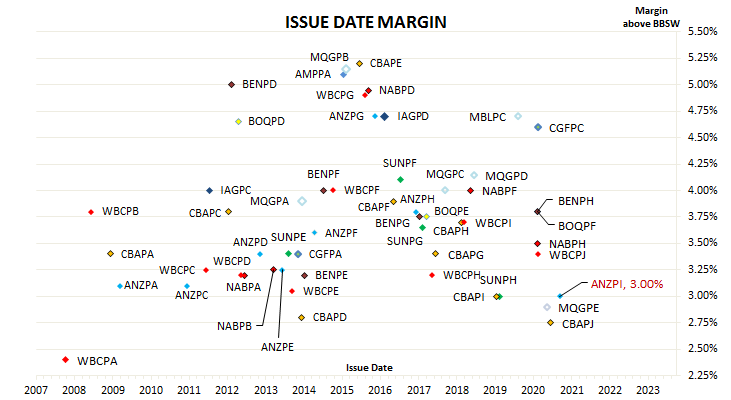Summary: ANZ to issue new hybrid security; upcoming call on existing hybrid in September; first call date in March 2028; initially to pay around 3.05% (annualised, including franking credits); issue margin towards low end of trading margin band.
Editor’s note: This announcement was made on 1 June and margins shown in the charts below are derived from prices on that day.
In recent years, when one of a company’s existing hybrids approaches its first call date (or first optional exchange date), speculation turns to the likelihood of a replacement hybrid security. A replacement security makes sense given APRA regulations require banks and other financial institutions to maintain equity capital above certain minimum ratios of assets. ANZ’s latest hybrid security offer is in keeping with this “tradition” as its ANZ Capital Notes (code: ANZPD) is approaching its September 2021 call date.
ANZ plans to raise $1 billion via an issue of ANZ Capital Notes 6 (code: ANZPI) securities, with the ability to raise more or less than this amount. The new securities will be perpetual, convertible, subordinated, unsecured, redeemable notes and the proceeds will be used to refinance ANZ’s existing Capital Notes (code: ANZPD) and “for general corporate purposes”.
The new notes have some features in common with both equities and debt securities. Distributions are at the discretion of directors but they are calculated according to a set formula with reference to the $100 face value of the securities. The notes will qualify as Additional Tier 1 (AT1) capital under the Basel III bank regulatory framework, which means they have the now-standard “event” clauses which may lead to early conversion into ordinary shares or a write-off of the capital notes should APRA require it. In the event ANZ were wound up and APRA had not already forced a write-off, its hybrids would rank above ordinary shares but below ordinary debt securities and other liabilities.
The new capital notes had an indicative distribution rate equivalent to 3 month BBSW plus a margin which lies in a range of 300bps to 320bps. The final margin was determined to be 300bps by a “book build” and the result was announced on 9 June 2021. A book build is a tender process managed by investment banks on behalf of the issuer in which investment institutions each place bids for a set volume at a price/yield.

The chart above shows the history of issue margins of hybrid securities over the last decade or so, including the GFC period in 2008/2009.

